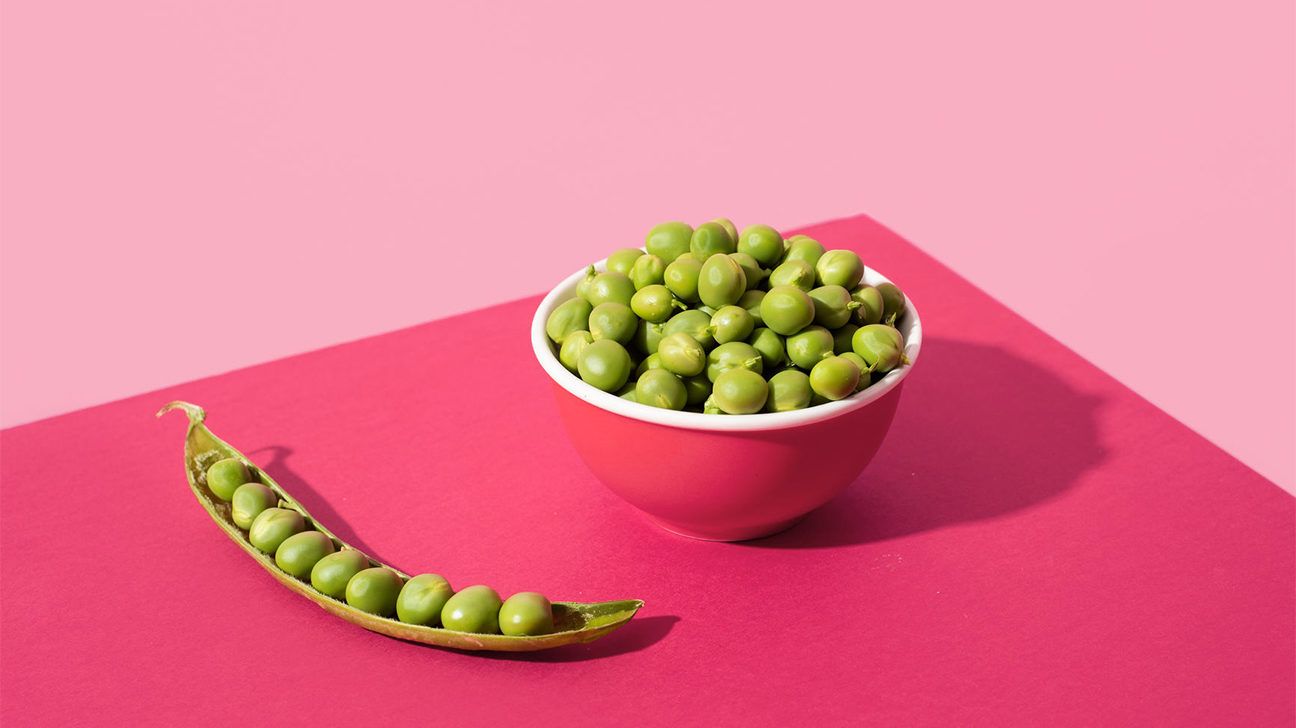If you’re looking for a tasty vegetable side dish, give peas a chance. But know that not all types of pea are the same—the little green orbs you probably picture are properly known as English peas, but there are also snap peas and and snow peas. So what is the difference between peas and sweet peas (or English peas and other peas)?
A sweet pea (the common diminutive that grandmothers everywhere love to use) is technically a flowering plant with beautiful pink and purple flowers. The sweet pea isn’t a pea at all—in fact, the seeds of the sweet pea plant are toxic and not edible!
However, regular, garden-variety peas are sometimes informally called sweet peas, so that is where the confusion stems from.
When it comes to edible peas, here’s a breakdown of the types you’ll find:
English peas are actually just a variety of garden pea that are commonly grown and are known for their sweet flavor and bright, beautiful green color. They need to be shucked before eating—so, good to know: A pound of pea pods is about the equivalent of 1 to 1.5 cups of shelled peas.
English peas are a great way to add some color to your favorite dishes—from fried rice to pot pie fillings—but they can also be the star of the show.
They’re easy to find in the frozen foods aisle of your grocery store (with or without carrots along for the ride), but when they’re fresh, they’re delicious eaten raw. Or, you can blanch them, saute them, or even puree them.
If you have a bounty of fresh peas from the garden, you can freeze them in a single layer on a baking sheet, then store in an air-tight container.
Two other common varieties of peas are snap peas and snow peas. Unlike English peas, these have tender pods that can be eaten along with the peas inside, although you’ll still want to pull off the strings before preparing them. Read more about the differences between snap peas, snow peas, and English peas (and find recipes for the snap and snow varieties there too).
Here are some ways to make English peas shine—fresh if you’ve got ’em, but frozen is fine:
1. Seared Salmon with Bacon and Spring Peas
This recipe from Atlanta’s Aria marries fresh spring peas with meaty salmon and crisp bacon for a perfect mix of healthy and decadent. A pea puree and pea shoot garnish intensify the pea power in this dish. Get the Seared Salmon with Bacon and Spring Peas recipe.
2. Potato Salad with Peas and Mint
This potato salad is a great way to stray from the mayo-based picnic classic. Shallots, chopped fresh mint, and fresh peas add color and flavor. Make it ahead so you can serve it at room temperature. Get our Potato Salad with Peas and Mint recipe.
3. Warm Spring Vegetable Salad with Fava Beans and Peas
Fava beans pair perfectly with fresh English peas, green beans, and radicchio, for a beautiful upgrade on the standard green salad, served warm with a light and creamy lemon vinaigrette. Blanch all of the veggies the day before and you can assemble the salad in no time. Get our Warm Spring Vegetable Salad with Fava Beans and Peas recipe.
4. Pasta Carbonara with Peas
This is a classic pasta carbonara recipe with linguine, pancetta, Pecorino Romano, Parmigiano-Reggiano, loads of freshly ground black pepper, and a cup of fresh peas. Make sure to keep the pasta water so you can thin out the carbonara sauce. Get our Pasta Carbonara with Peas recipe.
5. Pea and Ricotta Bruschetta
This quick and easy pea mash with mint can be served as a side on its own, or piled on toast with ricotta and radishes for a light snack or appetizer. Get our Pea and Ricotta Bruschetta recipe.
6. Pea Risotto
Why settle for a mere sprinkling of peas to add pop to a rice dish when you can have a bright green risotto suffused completely with the fresh flavor and vibrant color of sweet spring peas? While this dish works perfectly with frozen peas, if you have fresh ones, even better. Get our Pea Risotto recipe.
7. Green Pea Soup
Thick and hearty split pea soup has its place, but this lighter take is the perfect way to pay homage to fresh peas—3 cups of them get pureed with sauteed leeks, vegetable broth, fresh mint, and lemon. It’s an amazing vegetarian dish, and a swirl of crème fraîche is a great finishing touch. Get our Green Pea Soup recipe.
8. Braised Lettuce with Bacon, Shallots, and Peas
When in doubt, always pair peas with any kind of ham—bacon is no exception. Here, hearts of romaine are braised until silky and peas are gently tossed in their white wine glaze at the end. Then the crispy bacon comes in as a garnish, for a vegetable dish unlike any you’ve ever had before. Get our Braised Lettuce with Bacon, Shallots, and Peas recipe.

